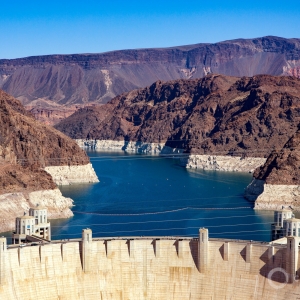Federal Water Tap, August 16: Senate Passes Infrastructure Bill
The Rundown
- Trillion-dollar infrastructure package now heads to the House
- Ten water and wastewater facilities notified the EPA that they are not receiving enough chlorine or other disinfectants.
- NOAA publishes an interactive map showing the risk of airborne toxins from algal blooms along Florida’s Gulf Coast.
And lastly, FEMA announces funds to help disadvantaged communities prepare for natural hazards.
“It is critical that as we work to address climate change, we are doing so in a way that ensures equity in the delivery of our programs.” — Deanne Criswell, the administrator of FEMA, when announcing $1.16 in pre-disaster resilience funds. Disadvantaged communities will receive priority.
By the Numbers
7: Public water systems that notified the U.S. Environmental Protection Agency that they have not been able to secure a reliable supply of chlorine or other disinfectants. Three wastewater treatment facilities also gave notice. The EPA could issue a certificate of need, which would require chemical manufacturers to provide to utilities the contracted amount of chlorine. Without adequate disinfectants the utilities say they would have to tell customers to boil their water or even shut down operations. The utilities that filed the notices are mostly in California but also New Mexico, New York, Utah.
$1.16 Billion: Funding that FEMA is making available to help communities better prepare for natural hazards, like floods and fires. The funds will go toward two programs: Flood Mitigation Assistance ($160 million) and the Building Resilient Infrastructure and Communities ($1 billion). The needs of disadvantaged communities will be prioritized.
News Briefs
Infrastructure Bill Clears Big Hurdle
The Senate, by a vote of 69-30, passed a $1.2 trillion infrastructure bill, which includes significant money for water systems, drought response, and climate resilience.
It is, without question, an enormous bill. For water there is $10 billion to clean up PFAS chemicals, $15 billion to remove lead service lines, $23 billion split evenly for the state revolving funds, and $450 million for water recycling.
Some less publicized highlights: $130 million to relocate tribal communities from climate hazards, $2.5 billion for Indian water rights settlements, and restoration of a federal tax deduction.
Nutrient Pollution
The EPA published final recommendations to states for establishing nutrient pollution standards for lakes and reservoirs.
Studies and Reports
Harmful Algal Blooms As Respiratory Risk
NOAA has developed an interactive map showing the respiratory risk of harmful algal blooms along Florida’s Gulf Coast.
Red tides caused by the species Karenia brevis can be carried aloft by strong winds. The toxins in the algae can be harmful if inhaled by people with asthma or other respiratory ailments.
The risk of aerosolized toxins is high enough that the Centers for Disease Control and Prevention will begin a study this year to assess airborne exposure in Florida residents who live or work on Lake Okeechobee, St. Lucie River, Caloosahatchee River, and Cape Coral canals — all places with a recent history of severe blooms. Results are expected in 2023.
In context: Harmful Algal Blooms in Clear Lake, California
On the Radar
Great Lakes Meeting
A group that advises federal agencies on Great Lakes matters will hold virtual public meetings on August 30 and 31.
Maryland Water Affordability Meeting
A group that advises the U.S. Commission on Civil Rights on matters related to Maryland will hold a public meeting on September 13. The focus of the meeting is the group’s work on water affordability in the state.
Federal Water Tap is a weekly digest spotting trends in U.S. government water policy. To get more water news, follow Circle of Blue on Twitter and sign up for our newsletter.
Brett writes about agriculture, energy, infrastructure, and the politics and economics of water in the United States. He also writes the Federal Water Tap, Circle of Blue’s weekly digest of U.S. government water news. He is the winner of two Society of Environmental Journalists reporting awards, one of the top honors in American environmental journalism: first place for explanatory reporting for a series on septic system pollution in the United States(2016) and third place for beat reporting in a small market (2014). He received the Sierra Club’s Distinguished Service Award in 2018. Brett lives in Seattle, where he hikes the mountains and bakes pies. Contact Brett Walton






Leave a Reply
Want to join the discussion?Feel free to contribute!